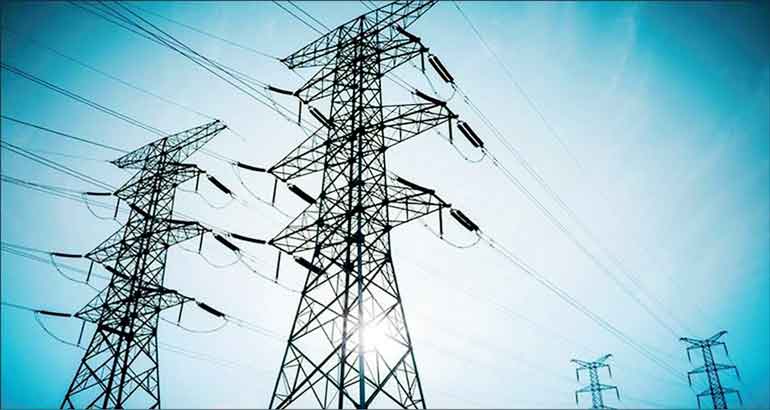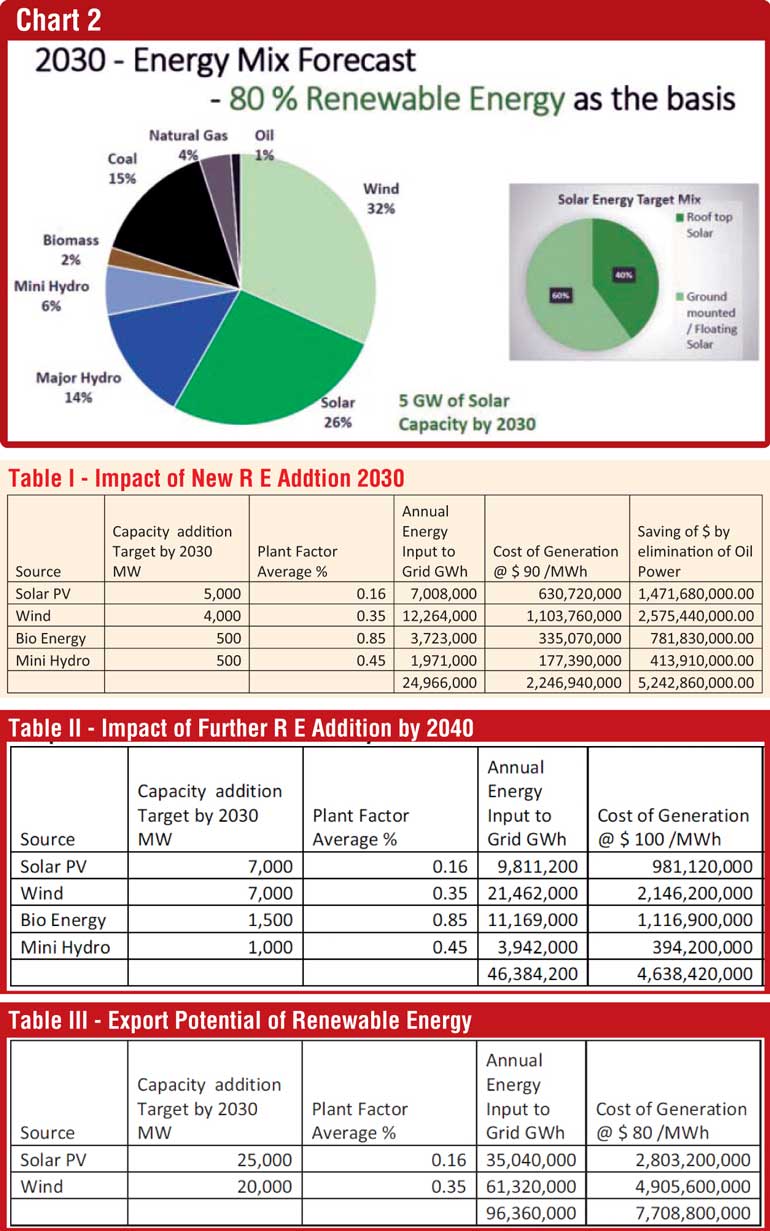The new Electricity Act – good, bad or ugly?
Wednesday, 13 December 2023 00:10 – – 35



 The much awaited draft electricity act designed to permit the restructuring of the electricity sector has received the approval of the Cabinet. To what extent the rest of the members of the Cabinet studied the content and the impact of the proposals made by the Minister of Power and Energy will be a question in the minds of many, who have even a nodding acquaintance of the intricacies of the electricity sector, which has very much been in the news.
The much awaited draft electricity act designed to permit the restructuring of the electricity sector has received the approval of the Cabinet. To what extent the rest of the members of the Cabinet studied the content and the impact of the proposals made by the Minister of Power and Energy will be a question in the minds of many, who have even a nodding acquaintance of the intricacies of the electricity sector, which has very much been in the news.
This draft act is ostensibly based on the findings of the specialist committee appointed by the Minister to study and propose to the required re-structuring of the electricity sector, which was plagued by decades of strife and the accusations of corruption and mismanagement. The sector has become a mill stone on the people, with accumulated losses over the past decade alone estimated to exceed a trillion rupees.
The matters came to a head with many hours of power cuts which could have been a factor leading to the resignation of President Gotabaya Rajapaksa followed by the massive multiple hikes in the consumer tariff over the past year.
- Increase of 66% in August 2022
- Increase of 88% in February 2023
- Reduction of 14% in July 2023
- Increase of 18% increase in October 2023
So we are back to the February 2023 level of tariff now or even a little worse off.
While such tariff increased were supposed to make the CEB commercially viable and no doubt implemented at the behest of the IMF, the immediate result had been the disconnection of over 500,000 connections, of the lowest strata of consumers who could no longer pay the increased tariff on top of the ever increasing cost of essential consumer items including food. One wonders how many of the high end consumers or State institutions with arrears as often highlighted in the media has been disconnected if any. To what extent has these disconnections improved the finances of the CEB?
Everyone will be waiting with bated breath, the outcome of the new act, which highlights the need for implementing a cost reflective consumer tariff. The unanswered question is what is the reasonable cost of generation and if there are provisions even after restructuring to force/compel/incentivise those in charge to strive to achieve the most optimal cost of generation, taking into account the vast advances in technology taking place globally and the undoubted bounty of multiple sources of renewable energy that nature has bestowed on our motherland.
In light of the recent push by the Minister, which was also approved by the Cabinet, to permit adjustment of tariff every three months, instead of biannual adjustments that he himself assured of a few months ago, the consumers are most anxious as to when the next price hike would come. The past reality has been that every adjustment is an increase in tariff. The drama in July when CEB offered a 3% reduction and the PUCSL approved a 14% reduction has already been overturned with the consumers being worst off with an 18% increase.
Contrary to the assurances of the restructuring committee the degree of public consultation to arrive at the final proposals is very much in doubt. Have they forgotten that the consumer public is the major stakeholder and owner of the electricity sector and have every right to express their views? Even the requests made by the indigenous renewable energy industry associations to view and comment on the proposals prior to submitting for Cabinet approval were ignored.
However, a session was held at the Ministry of Power and Energy chaired by the Minister, after the Cabinet submission, where the consultants engaged to prepare the restructuring proposals made a presentation of same, to the selected group of industry representatives. On the surface of it, the proposals summarised on the overall structure as shown in Chart 1, are reasonable and progressive.
The issue at hand, is to what extent the draft act would permit/enable these proposals to be implemented practically, and in a manner to ensure the benefits flow to the citizens of Sri Lanka, not only by making electricity an accessible and affordable commodity without delay. And even more importantly to ensure that the sector is developed to make our renewable energy an exportable commodity earning foreign exchange with the immense benefits will flow into the Sri Lankan coffers and not exploited by foreigners or their lackeys in the country.
The technological advances over the last decades have changed the country to an energy resource rich nation. This happy situation can yield the positive results, only if we have the wisdom and vision to convert such renewable resources to yield economic and social development to get out of the present economic mire and as well as to achieve the much touted status of a developed nation. We don’t have to wait until year 2048 as promised by the current President. The technology and the market is already in place.
This revolution can be realised by making use of the practically unlimited resources of Solar Wind energy as well as yet to be properly recognised bio mass energy, a source of much direct and immediate spinoff benefits over and above being a source of firm power. This author has espoused such benefits in earlier articles which are available in www.bioenrgysrilanka.lk. But solar energy in particular, is the low hanging fruit which can be made to pay dividends in a few short months.
But the danger still remains as what extent the proposed electricity act would support and facilitate this change and what hidden threats would be there to enable such resources to be exploited for the sole benefits of none nationals or a few locals.
The memory is still green of the damage caused by the lack of a comma, in the last amendment of the original Act No. 20 of 2009 by the amendment No. 31 of 2013, which was exploited by interested parties to sabotage the development of indigenous renewable energy sector over seven years from 2016 to 2023. We are thankful to the present Minister of Power and Energy for resolving this issue with the latest amendment of the Electricity Act No. 31 of 2013, in 2022, which no doubt re-opened the door for investment on all renewable energy based power generation, up to the all-important 10 MW limit which has shown to be well within the capabilities of local investors as it should be, under the visionary None Conventional Renewable Energy (NCRE) regime under the stewardship of the Sri Lanka Sustainable Energy Authority. While several other issues still remain, the developers are retaking interest in re-entering the sector, much to be benefit of the nation.
However, the Minster in the same stroke, perhaps inadvertently created a very dangerous situation by repealing the Section 3 of the clause No. 9 of the original act No. 20 of 2009, by the latest amendment of April 2022. The original clause stated.
Extract from Electricity Act No. 20 of 2009
Eligibility to apply for a license under Section 11
9. (1) No person other than any one of the following shall be eligible to apply for the issue of a generation license, to generate electricity over and above the generation capacity of 25 MW:—
(a) the Ceylon Electricity Board, established by the Ceylon Electricity Board Act, No. 17 of 1969;
(b) a local authority
(c) a company incorporated under the Companies Act, No. 7 of 2007, in which the government, a public corporation, a company in which the government holds more than fifty per centum of the shares or a subsidiary of such a company, holds such number of shares as may be determined by the Secretary to the Treasury, with the concurrence of the Minister in charge of the subject of Finance
It is our belief that this clause was in place in the original Act No. 20, to ensure that the electricity sector would remain a Sri Lankan industry, which is essential if we place any value on future energy security and the achievement of the SDG No. 7 which is to provide “Access to clean energy for all at affordable prices”. While some discussion may have been needed to arrive at the acceptable percentage of ownership that may be allowed for both local entrepreneurs and none nationals and any other safeguards needed to ensure Sri Lankan control of the sector, the action by the Minister to repeal the entire clause is foolhardy and cannot be condoned by any means, with the possible repercussions it may entail in the long run.
Even that opening does not legally permit the present moves to hand over large tracks of land to generate some 250 MW of Wind and further 240 MW of solar power to one Indian company, without a proper tender procedure with a project formulated by the CEB, with competitive bidding as provided by the clause No. 8 of the Act. They cannot claim exemption from tendering under any of the provisions for such in the Act by Clause No. 43.
This matter was voiced in the Parliament recently during the Budget debate and it is hoped that the concerned parties would take necessary actions to prevent this blatantly illegal act, which if allowed would be used as a precedence for future trends on the same lines, making a mockery of the many provisions of the Electricity Act to serve the nation.
No doubt we would need financial and technical assistance from abroad and the so called Foreign Direct Investments to achieve the ambitious targets set for the sector of reaching the 70% contribution by 2030 and the much more ambitious eventual net zero status of the electricity sector by 2040. However, such need cannot sacrifice the national imperatives of future energy security and none dependence on imported sources of energy and the interests of the consumers. There are already provisions in place under the BOI for dealing with such investments where the interests of the investor to gain a fair return on his investment and repatriation of reasonable profits gained. But under no circumstance should our resources are to be paid for in foreign currencies, if they are targeted for internal consumption. Naturally some means of compensating for any parity risks will have to be built into the feed in tariff structure and such concessions must be available to the local investors as well. In addition there should be no room for any large projects to be able to impose undue pressure on the system control even if the majority share is held by none nationals.
It is our earnest hope that the new act would provide protection adequate safeguards against the above dangers.
A quick look at the potential scope of electricity sector alone, based on current policies, must be viewed with their potential value, instead of lamenting on inability of the local capital market to finance the significant funding needed, and the belief that only way out is by opening wide the access to foreign investors without due controls permitting them domination as being done in the petroleum sector. This would be even worse than the exploitation of our national resources by the colonial masters in the past and some of our own exporters now, hiding behind some ill-conceived relaxation of the protection afforded by the Exchange Control laws.
To gain an insight to the potential bounty, the 70% RE target requires some 9,000 MW of renewable energy generation capacity to be added by year 2030 and a further 15,000 MW to be added by year 2040. What does this mean by way of Rupees and Cents or more importantly Dollars.
The 9,000 MW which would be mainly solar energy, both ground mounted and roof top PV and Wind would generate some 15,300 MWh annually. The further addition of 17,000 MW by 2040 as forecast would generate some 37,000 MWh annually. The tantalising benefits both in serving the electricity needs of the country and the savings by eliminating the import of fossil fuels are presented in Tables I and II.
These are very conservative numbers calculated for the year when eventual targets being reached. But from now on with necessary policies and facilitation, the earnings would grow year by year and more importantly save the billions of dollars presently bleeding the country.
According to a study by the Sustainable Energy Authority, Sri Lanka has an onshore and offshore wind power potential of 102 GW, with 106 GW potential of solar power. To reach the renewable energy target we will need only tap around 10 GW of solar and wind potential. Based on a very conservative projection of possibility of just 25% of this potential the possible export income is unbelievable as shown in Table III. We expect that these would be entirely for export being already self-sufficient for domestic use.
At this juncture, when we are hoping that the new electricity act would pave the way for Sri Lanka to access this pot of gold, care is needed to ensure that the proposed Act does not create a negative environment depriving Sri Lanka of one more opportunity to raise its head economically and regain our lost national pride.
Wading through the 76 pages of the draft act with a fine tooth comb to ensure it does not hide any potential dangers, is no easy task. Therefore, I would like to entreat everyone with an interest in a future Sri Lanka none dependent on any imported fossil fuels of any kind, and particularly our brethren with the necessary legal training, to take up this task as a national service. The time available is limited as the Minister intends to submit the Act for parliamentary approval within two weeks.
This Act must ensure the meeting of the following non-negotiable and essential national imperatives:
1. Energy is Sri Lanka’s own asset and belongs to the citizens
2. Ensuring future energy security, which is essential for national security, depends on achievement of non-dependence on imported fossil fuels and to be a Sri Lankan industry controlled and governed by Sri Lanka
3. While any foreign investments are welcome and encouraged to make the transition smooth and on target, they must be compensated under the existing systems of BOI investments and there shall be no tariff paid in foreign exchange when the consumption is for local usage
4. Electricity industry should be viewed not merely as serving the energy needs of other sectors of the economy, but as a sector which can contribute heavily to the economy and GDP growth with employment generation, high level skills development and technical advancement.
5. The well-recognised bounty of renewable energy many fold over the needs of the country should be developed as a means of earning foreign exchange, which is the segment to invite foreign investors, who can be paid in foreign exchange while ensuring the fair share of the benefits to flow to the national economy as done by the middle eastern countries with their oil reserves.
It is hoped that the new Electricity Act would usher in an era of confidence and prosperity to the electricity sector instead of being the monster as it is viewed by most consumers.
(The writer can be reached via email: parajayasinghe@gmail.com.)






